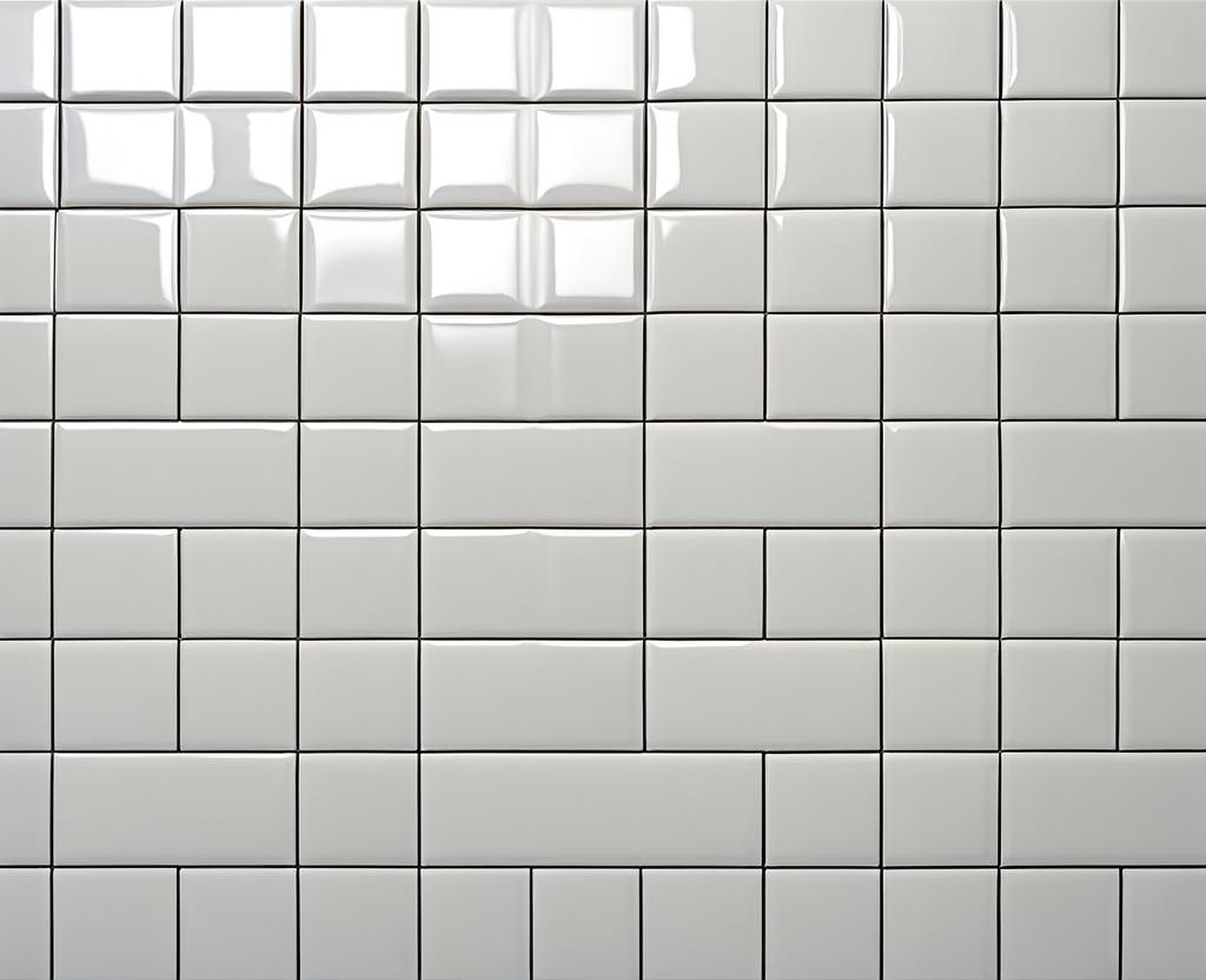Homeowners adore the sleek and timeless look of white tile with black grout, adding a crisp contrast that captivates the eye. This classic combination showcases clean lines and a sophisticated aesthetic, making it an evergreen choice for bathrooms, kitchens, and living spaces. However, like any design element, it comes with its fair share of pros and cons.
The Benefits of Black Grout with White Tiles
There’s a reason why the pairing of white tile and black grout has stood the test of time – it offers a multitude of benefits that homeowners can’t resist. First and foremost, the striking contrast created by the dark grout against the pristine white tiles adds depth and visual interest to any space. This bold combination instantly elevates the room’s aesthetic, lending a touch of modernity and sophistication.
Another significant advantage is the ability of black grout to camouflage dirt and grime more effectively than lighter shades. This means that your floors or walls may appear cleaner for longer periods, reducing the need for frequent scrubbing and deep cleaning. It’s a particularly attractive feature for high-traffic areas or households with pets and children, where spills and messes are an inevitable part of daily life.
From a design perspective, black grout with white tiles offers a versatile canvas that complements a wide range of interior styles. Whether you’re aiming for a sleek and contemporary vibe or a more traditional and timeless ambiance, this dynamic duo can adapt seamlessly. Plus, the clean lines and bold contrast create an illusion of spaciousness, making smaller rooms feel more open and inviting.
Potential Drawbacks of Using Black Grout
While the benefits of black grout are undeniable, it’s essential to consider the potential drawbacks before committing to this design choice. One of the most significant challenges is the maintenance required to keep the grout looking fresh and vibrant. Black grout is notorious for showing every speck of dirt, hair, and discoloration, which can be a constant source of frustration for homeowners.
Regular cleaning and sealing of the grout are crucial to prevent staining and discoloration. However, even with diligent maintenance, black grout may eventually lose its rich, inky hue and develop an unsightly, dull appearance over time. This can be particularly problematic in high-moisture areas like bathrooms, where mold and mildew thrive.
Another consideration is the potential for black grout to clash with certain design elements or color schemes. While it provides a bold contrast with white tiles, it may not harmonize as well with other tile colors or patterns, limiting your design flexibility. Additionally, some homeowners find the stark contrast between white tiles and black grout to be too harsh or overwhelming, particularly in smaller spaces.

Maintenance Tips for White Tiles and Black Grout
If you’ve decided to embrace the beauty of white tiles with black grout, proper maintenance is key to ensuring its longevity and preserving its stunning appearance. Here are some essential tips to keep in mind:
- Regularly clean the grout with a specialized grout cleaner or a mixture of warm water and mild detergent. Avoid harsh chemicals that can damage the grout or tiles.
- Seal the grout every 6 to 12 months to protect it from stains and discoloration. Look for high-quality, penetrating sealers designed specifically for grout.
- Use grout whitening products or a baking soda paste to remove stubborn stains and refresh the white tile appearance.
- Invest in a good-quality grout brush or grout cleaning tool to effectively scrub and remove grime from the grout lines.
- Address spills and messes promptly to prevent staining and discoloration.
By following these maintenance tips, you can keep your white tile and black grout flooring looking pristine and inviting for years to come.
While the classic combination of white tile and black grout is timeless, modern design trends have added a fresh twist to this beloved pairing. One of the most popular styles is the use of larger grout lines, creating a bold, grid-like pattern that adds depth and texture to the space. This contemporary approach not only adds visual interest but also showcases the beauty of the grout itself, making it a focal point rather than simply a functional element.
Another trend that has gained traction is the incorporation of patterned or colored tiles alongside black grout. This unexpected combination allows for a playful and unique aesthetic, pushing the boundaries of traditional design. Whether it’s a vibrant mosaic of colorful tiles or a sleek herringbone pattern, the black grout acts as a grounding force, tying the elements together in a cohesive and striking manner.
For those seeking a more subtle approach, the use of black grout with matte or textured white tiles can create a soft, organic feel. The matte finish on the tiles adds warmth and depth, while the black grout provides a sophisticated contrast, resulting in a serene and inviting atmosphere.
| Modern Black Grout Style | Description |
|---|---|
| Large Grout Lines | Bold, grid-like patterns with larger grout lines for added depth and texture. |
| Patterned or Colored Tiles | Playful and unique combinations of patterned or colored tiles with black grout. |
| Matte or Textured Tiles | Soft and organic feel with matte or textured white tiles contrasted by black grout. |
Regardless of the style you choose, the combination of white tile and black grout offers a versatile canvas for creativity and personal expression, allowing you to create a space that reflects your unique taste and personality.